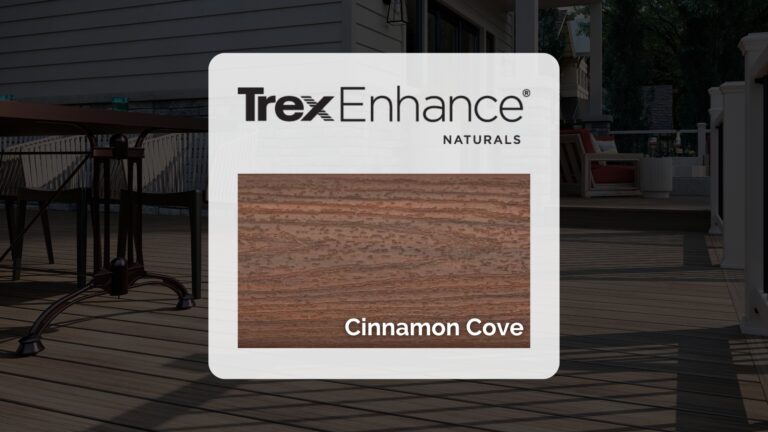

If you’ve noticed your deck shifting or sloping, particularly on a hillside, you’re likely facing the common problem of deck posts sliding downhill. This issue can stem from erosion, improper installation, or the natural movement of soil over time. In this guide, we’ll walk through the essential steps on how to prevent deck posts from sliding downhill, ensuring your deck remains safe and stable.
Understanding Why Deck Posts Slide Downhill
Decks built on sloped or uneven terrain are particularly vulnerable to movement. Soil erosion, weather conditions, and inadequate support can cause deck posts to shift or slide over time, leading to a sloping deck. The main causes include:
- Erosion and soil movement due to rainfall or improper drainage
- Incorrect footing installation or shallow footings
- Heaving from freeze-thaw cycles, particularly in colder climates
Signs Your Deck Posts Are Slipping
Look for these common signs of movement:
- The deck leans or slopes noticeably
- Gaps or separation between the deck and the house
- Visible cracks in the ground around the deck posts
Solutions to Prevent Deck Posts from Sliding Downhill
To effectively secure your deck and prevent deck posts from sliding downhill, it’s essential to choose solutions based on the underlying cause. Below are effective methods to reinforce and stabilize deck posts.
1. Install Retaining Walls for Added Support
Retaining walls are one of the most effective ways to prevent soil erosion on a slope. By constructing a retaining wall uphill from your deck, you can stabilize the soil and reduce the likelihood of it shifting.
- Material Selection: Choose durable materials like concrete, stone, or treated wood for your retaining wall.
- Placement: Build the wall close enough to the deck to support the posts, but allow for proper drainage to avoid water buildup.
- Maintenance: Inspect the wall periodically for any signs of erosion or damage, especially after heavy rain.
2. Use Helical Piers and Tiebacks
Helical piers and tiebacks provide a more robust solution for decks on steep slopes. These steel support systems are drilled deep into stable soil, preventing the deck from moving. This approach is ideal when learning how to prevent deck posts from sliding downhill on challenging terrains.
- Helical Piers: These are corkscrew-like supports that anchor the deck to deeper, load-bearing soil. Helical piers are ideal for heavy decks or those at risk of sliding.
- Tiebacks: Often used with helical piers, tiebacks provide lateral support to hold the deck in place against slope pressure.
3. Proper Footing Installation
A solid footing is critical to deck stability, especially on a slope. Poorly installed footings are one of the most common reasons for deck movement. When installing footings, follow these practices to ensure deck posts remain stable and prevent sliding downhill.
- Excavate to the Frost Line: Ensure footings are dug below the frost line to prevent heaving caused by freeze-thaw cycles.
- Reinforced Concrete: Use reinforced concrete footings to provide a solid base, particularly if your soil is soft or sandy.
- Add Backfill: Use gravel or other stable materials to backfill around the footing, enhancing stability and drainage.
4. Improve Drainage Around the Deck
Water is a significant factor in soil erosion, so managing drainage around your deck is essential. Here are a few ways to control water flow and prevent deck posts from sliding downhill:
- Install Downspout Extensions: Redirect downspouts away from the deck footings to prevent water from pooling around the posts.
- Grade the Soil: Slope the ground away from the deck to encourage water to flow away naturally.
- French Drains: If drainage issues persist, consider installing a French drain to channel water away from the deck.
Maintenance Tips for Long-Term Stability
Even with a strong foundation, regular maintenance is crucial to keeping your deck posts secure. Here are a few tips:
Regularly Inspect for Signs of Movement
Inspect your deck and the surrounding soil at least once a year, especially after severe weather. Check for signs of erosion, gaps, or any movement in the posts.
Maintain Drainage Systems
Ensure that all drainage systems, like downspouts or French drains, are functioning correctly. Clear debris from gutters and downspouts regularly to prevent water buildup.
Monitor Retaining Walls and Piers
If you’ve installed retaining walls or helical piers, inspect them periodically for signs of wear or erosion. Address any issues promptly to maintain the structural integrity of your deck.
Frequently Asked Questions (FAQs)
What causes deck posts to slide downhill?
Deck posts can slide due to soil erosion, poor drainage, incorrect footing installation, or natural soil movement on slopes.
How can I tell if my deck is at risk of sliding?
Signs include a noticeable slope, separation from the house, visible soil erosion, and gaps around deck posts.
Are retaining walls necessary for decks on a slope?
Retaining walls are highly effective for decks on steep slopes as they provide support by stabilizing the surrounding soil.
What are helical piers, and when should I use them?
Helical piers are deep foundation supports that anchor into stable soil, ideal for preventing movement on sloped or soft soil.
Can I fix a sliding deck myself?
While minor drainage improvements may be DIY-friendly, significant fixes like installing helical piers or retaining walls are best handled by professionals.





